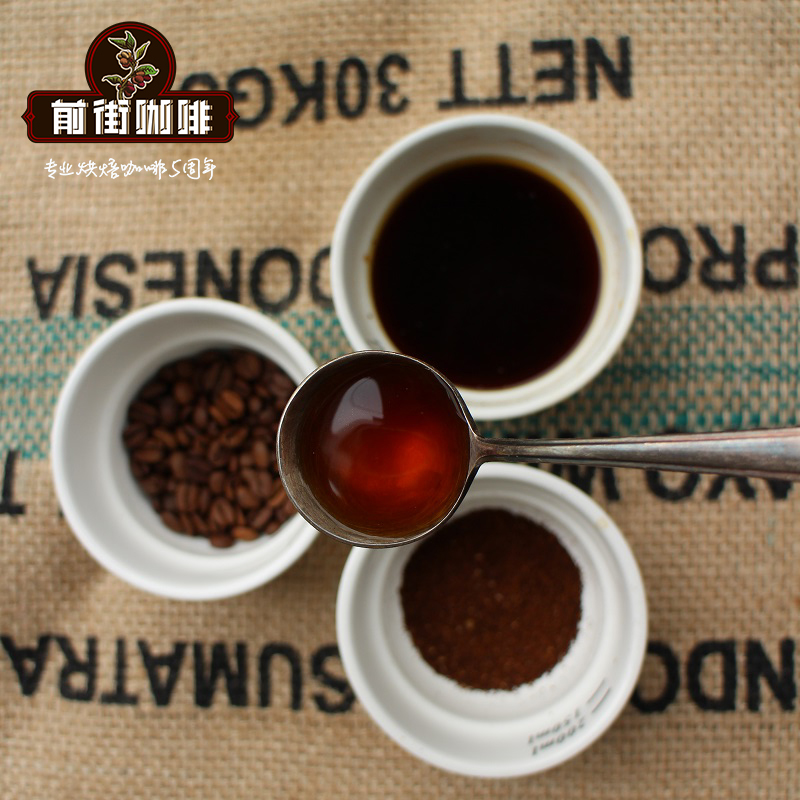How coffee is grown, produced and roasted into a cup of delicious coffee

Professional coffee knowledge exchange more coffee bean information please follow the coffee workshop (Wechat official account cafe_style)
We consume more than 2.25 billion cups of coffee worldwide every day. It is estimated that 2/3 of Americans drink one cup of coffee a day, while those who drink coffee every day drink 18.5 gallons of coffee a year-but that is negligible compared with Finland, where the average Finn drinks three times as much coffee a day as Americans.
In other words, coffee is very important to us no matter where we are in the world. However, do we know what we are drinking and where it comes from? To help coffee lovers understand how their daily pick-me-up drinks get into their cups, here's the story of coffee-from seeds to purchases.
Latte: it's not just a drink. It takes more than ten minutes to grow coffee and make coffee. Unroasted raw coffee beans are actually the seeds of a coffee plant (Coffea). Coffee has several plants, the most common being Arabica, which accounts for 75-80 per cent of global coffee production, while coffee trees, also known as robusta, account for about 20 per cent of global production.
It takes about 2.5 months for fresh seeds to germinate into plants, while older seeds take six months to germinate. Young coffee trees can be very vulnerable, so they are usually placed under a sunshade to protect them from natural factors.
Then, it takes about 3-4 years for a coffee tree to start producing quality coffee fruit that can be harvested. After flowering, this plant will grow into a coffee cherry in 30-35 weeks.
Harvesting and processing Coffee Cherry Coffee Cherry can be harvested after 4-5 years of planting. Most coffee-producing countries have a harvest every year, although some countries like Colombia blossom twice a year, leading to two bumper harvests.
In many countries, picking coffee is still a labour-intensive job, and it is usually harvested by hand. This often happens because trees grow in developing countries, where labor costs are low, or the terrain is too difficult for mechanical operations.
So how did the harvest happen? When the coffee fruit turns bright red, farmers will know that the coffee fruit is ready to be harvested. They are then either stripped from the branch or selectively selected. If they are skinned, the pickers just need to pull their hands along the branches and pull all the beans to the ground, regardless of color. Green cherries can be added to the harvest, but if processed with ripe cherries, it will have a negative effect on the taste of coffee.
If cherries are selectively picked, pickers usually return to the tree to pick ripe cherries a few days later.
The fact that processed beans and cherries have been picked does not mean that the farmers' work is done: they now need to process to extract coffee beans from the fruit.
Coffee cherries are coffee beans wrapped in silver, parchment, pectin, pulp and outer layers, which means that these outer layers must be removed. In order to prevent decay, it must be finished as soon as possible after harvest.
Coffee cherries can be processed in a variety of ways, but the two most common methods include: sun treatment: this is the oldest method of processing coffee cherries, where the fruit retains its outer pulp before grinding. Cherries are sorted and washed, and immature, damaged and overripe cherries are removed. This is usually done by hand.
Then put the cherry on the surface of concrete or brick, dry in the sun, and manually turn the cherry regularly to make sure the cherry is dry evenly. The whole process was completed in 4 weeks. This method is often used in sunny climates, including Ethiopia and Brazil.
Washing treatment: this method removes the fruit that covers the seeds before drying begins. This requires a lot of water and specific types of machines. When cherries are soaked in water, some immature and damaged fruits float on the surface, so they are easy to find.
The peel and pulp of cherries squeeze out the cherries immersed in water through a depilator. Then, either use microbial fermentation to decompose the pulp, or use mechanical methods to scrub the pulp.
If fermentation is used, it must be carefully monitored so that the coffee beans do not have any unwelcome taste. Wet cherries leave a silver peel and a parchment layer around the coffee beans, which are usually dried to about 10-12% moisture after the wet treatment.
Although these are the two most common processing methods, they are not the only ones. Learn about honey processing and wet shell processing here.
See also: all the information you need to know about single-origin coffee the grinder picked part of the cherry, but not all. Next, the coffee beans are put into the sheller; this removes the parchment layer of wet coffee and the entire dry skin of dry coffee.
At this point, beans will still have their silver skins on them, and they may be polished and peeled. This step is optional, but polished coffee beans are generally considered better than unpolished ones.
Then the coffee beans are classified and classified. In the process, smaller or defective beans may be rejected. The mill also removes coffee beans that are damaged or overfermented by insects.
Export coffee beans at this stage, we have green coffee beans ready to be exported or sold in the domestic market. The scale of the global coffee export market is staggering-an estimated 5 million people worldwide are employed in the coffee growing and processing industries.
However, just because it can be exported doesn't mean it can drink. Tasting and grading coffee green beans are usually roasted in small batches, and the tasters will sample them to determine their quality. Beans are also graded according to the quality of their appearance, aroma and color. Tasters may decide to mix batches or even different varieties to obtain some quality, although others will remain from a single source.
Roasted coffee green beans are now roasted in large quantities at high temperatures. However, the temperature and time of roasting coffee beans are varied, all of which can improve the quality of coffee beans.
Coffee roasters develop different roasting characteristics for coffee beans from different sources. The origin, variety, processing methods and required flavor characteristics of coffee beans will determine the roasting method of coffee beans.
Some of the most common baking you will encounter are as follows: cinnamon roasting: immature sweetness, grassy and acidic light roasting: light brown, retaining the original characteristics of coffee beans and complex acidity American roasting: medium light brown, beans remain the same in urban baking: medium brown whole city baking: medium dark brown, baking flavor highlights Vienna baking: medium dark brown, surface oil, bittersweet taste Low acidity, authentic French baking: dark brown, glossy, charred background, authentic beans difficult to taste Italian baking: close to black, very glossy, no / low acidity, thin grease please note: these are just parameters.
Everyone has different baking preferences, but in the professional field, the lighter the baking, the better.
Grinding and brewing, you're almost ready for coffee! The roasted coffee should be ground to a roughness to suit the brewing method used. For example, an espresso machine requires finer coffee powder than a French coffee press.
There are many ways to make coffee, including: Bonmac DripperCHEMEXV60 Philharmonic pressure pot coffee machine each method of brewing coffee will have a great impact on the taste of your cup. Part of the fun of coffee is to try different roasting, grinding techniques and brewing methods to discover the real variety of coffee.
It's a long way from seed to cup, but every step adds value to your coffee. It's amazing how hard it took you to bring it to you-how many different coffees, processing methods, grinding and brewing methods you can try. So the next time you go to a coffee shop, try to ask what different kinds of coffee you have.
Written by A. Weiss of Doppio Coffee.
END
Important Notice :
前街咖啡 FrontStreet Coffee has moved to new addredd:
FrontStreet Coffee Address: 315,Donghua East Road,GuangZhou
Tel:020 38364473
- Prev

Starbucks Fragrance White production method introduction to the difference between Australian White Coffee and Fragrance White Coffee
Professional coffee knowledge exchange more coffee bean information please follow the coffee workshop (Wechat official account cafe_style) Australia Ruibai, heard the name for the first time, took it for granted to associate it with white coffee, or refers to coffee content, whiter coffee. Starbucks' new product Fl
- Next

[novice introduction] how do beginners buy the best coffee beans?
Professional coffee knowledge exchange more coffee bean information Please pay attention to coffee workshop (Wechat official account cafe_style) espresso, hand sauce, siphon pot, water temperature, extraction time you can always improve your technology and way, but no matter how good the technology is, coffee bean itself is the biggest factor affecting the flavor of your coffee. If we use coffee beans that are not of high quality, then
Related
- Beginners will see the "Coffee pull flower" guide!
- What is the difference between ice blog purified milk and ordinary milk coffee?
- Why is the Philippines the largest producer of crops in Liberia?
- For coffee extraction, should the fine powder be retained?
- How does extracted espresso fill pressed powder? How much strength does it take to press the powder?
- How to make jasmine cold extract coffee? Is the jasmine + latte good?
- Will this little toy really make the coffee taste better? How does Lily Drip affect coffee extraction?
- Will the action of slapping the filter cup also affect coffee extraction?
- What's the difference between powder-to-water ratio and powder-to-liquid ratio?
- What is the Ethiopian local species? What does it have to do with Heirloom native species?

